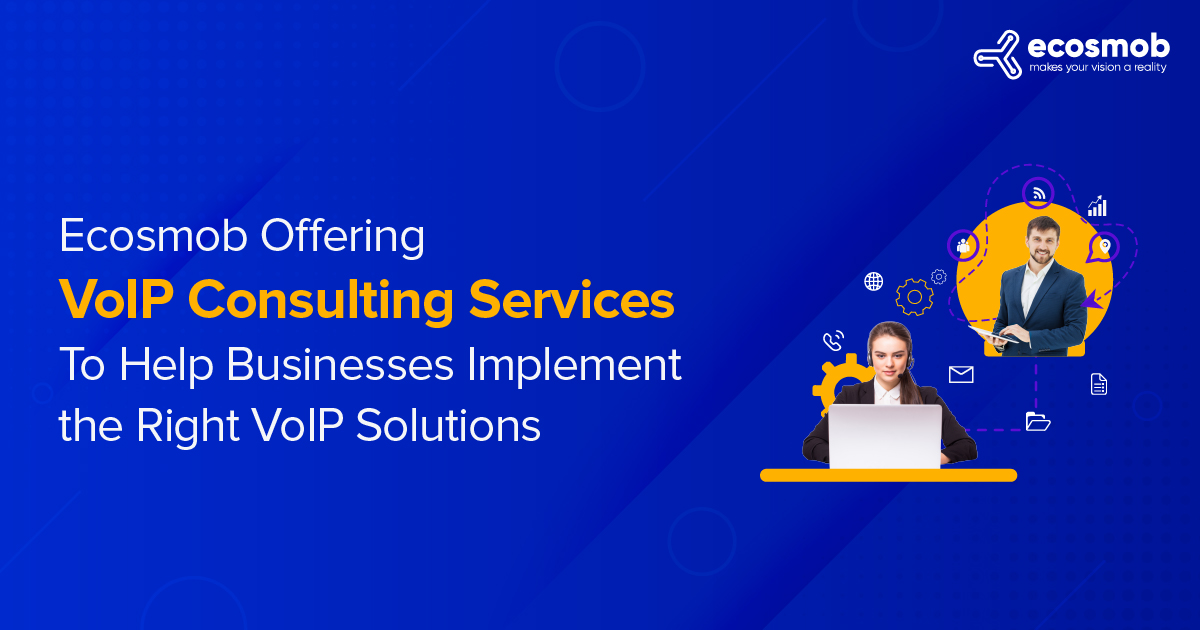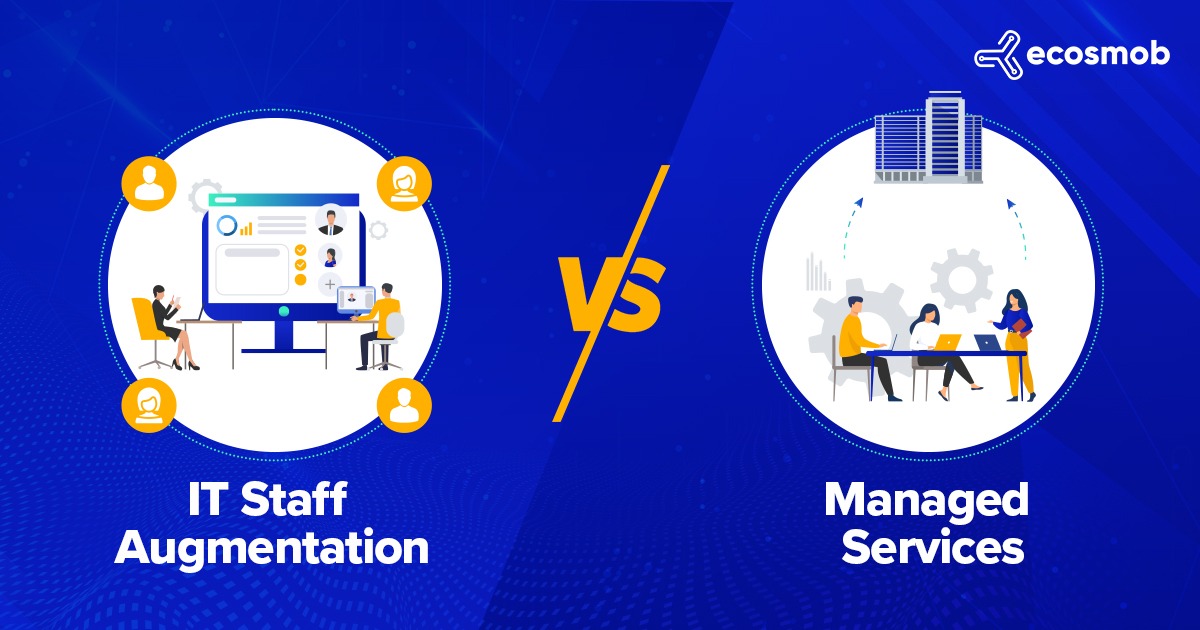Among the few sectors, IT has been a frontrunner and the biggest beneficiary of the outsourcing model. The two most popular solutions– staff augmentation services and managed services are commonly used to overcome IT talent shortages. IT staff augmentation services, though not new but are witnessing rapid growth today. At USD 66.5 billion in value, the demand for knowledgeable and experienced IT staff is growing rapidly.
The question that confronts most leaders is which part of the information technology function should be outsourced or which model of outsourcing will work better for the business. Will employing IT staff augmentation or managed services give strategic advantage? There is no straightforward way of handling these concerns. However, it’s better to understand the advantages and disadvantages to arrive at an informed decision.
IT Staff Augmentation Services
IT staff augmentation as the name suggests is the use of the outside talent on a short or long-term basis to overcome skill shortage, meet project requirements and deploy qualified IT professionals to secure the right talent for the right job.
For every organization, hiring IT staff augmentation companies is an operational as well as strategic decision. Making way for flexible staffing strategies staff augmentation consultation can empower a business to pick up the people who are best suited for the job and grow their augmented teams at scale as per the needs.
Advantages of Staff Augmentation
- Staff augmentation solutions help enterprises to reduce their recruitment and employee costs.
- Due to easy, and on-demand scalability, the model is gaining popularity. Companies can scale as they want without worrying about IT resources as per the demands of the project.
- The costs and liabilities of new full-time hires are reduced. This means less HR, finance, and admin time too. The hiring process becomes effortless as the responsibility of the retention of IT talent—from skill upgradation, selection and retention, and other perks are borne by the staff augmentation companies. As soon as the need arises, IT outsourcing with an augmentation model lends you ready access to the talent tech pool with the option of hiring from across the globe.
- Finding the right person for the right job is not easy, especially in the resource deficit and competitive IT sector. With IT staff augmentation services, the stress of finding the right talent every time for the organization reduces considerably.
- Keeping abreast of the latest in technology is not easy for any organization. But if you avail of the staff augmentation consultation, the effort and resources needed to upgrade will reduce significantly. The onus of securing advanced certifications and updating knowledge will fall on the knowledge partner, in this case, the IT staff augmentation company.
Managed Services
Another most popular model adopted by companies worldwide today is managed services.
According to Gartner, a managed service provider provides services such as network, application, infrastructure, and security, through ongoing and regular support and active administration on customers’ premises, using their own data center for hosting or availing a third party service for the data center.
In this framework, you pay an agreed upon fee to one of the chosen staff augmentation companies and the responsibility of the project rests completely with the outsourcing company. They run the entire show—from the team composition, and project management to the processes. The end-to-end responsibility of the software development and IT works lies in the chosen vendor. There is no necessity to provide any tech expertise.
It is basically macro-level supervision, as day-to-day operations and development work is taken care of by the managed services provider.
Advantages of managed services
- Working in a global environment is demanding and challenging. Meeting stiff deadlines and managing your infrastructure and network costs while keeping up with different time zones can take a toll. The in-house IT department may also not be comfortable working on irregular hours. Also, the overall costs comprising 24/7 network and infrastructure outgo and compensation for employees may not justify the RoI from the project. Managed services work wonderfully in such scenarios. You can deploy your IT department staff to other projects rather than manning tasks that can be outsourced.
- Not only do the managed services free up internal IT resources, but also enable you to fix terms for tasks outsourced. By inking service level agreements (SLAs), you get rid of the need to maintain recruitment, hiring, or training cycle for IT staff and just focus on the core IT staffing requirements.
- An experienced managed services provider brings much more to the table than just project-level solutions. A knowledgeable vendor will help you stay ahead of the market trends and adopt technological advancements readily owing to a strong IT expertise in the field. In the same way, usual activities that eat up time like vendor management are saved. Your resources can engage in strategic activities with peace of mind.
IT Staff Augmentation Vs Managed Services
How does Managed Services stack up to IT Staff Augmentation services? Perhaps, this is the first and foremost question that you will tackle. So, let’s dive into it right away.
i) Project control
If you are facing the dilemma of choosing one over the other, then you should consider the project control aspect primarily. To what extent do you want to have control over the outsourced project? How much autonomy are you willing to offer?
Clearly, IT staff augmentation services allow for better project control. But the need can vary on a case-by-case basis.
ii) Budgetary considerations
It is likely that managed IT services will cost more than staff augmentation services. As the former has a wider ambit covering both IT expertise and project management, staff augmentation consulting may come at a lower cost. If you can spend more money to focus entirely on other tasks while allowing the IT processes to be handled by a third party then managed services can be a good option for you. For businesses weighing their outsourcing options, streamlining team and project workflows is crucial. Leveraging actionable goal setting tools can enhance clarity and accountability for both staff augmentation and managed services, ensuring projects stay on track toward defined outcomes.
iii) Retain the operational focus
IT staff augmentation will require day-to-day participation and operational tasks. While managed services providers usually follow their own project management framework as per their team Since managed IT services provide their own project management processes, the company can step aside and let the parent company step back and focus on its services. The IT company will care for technical functions and development, while your staff zones in on other operations.
| Key areas
of focus |
Staff Augmentation | Managed Services |
| Process deployed | Securing outsourced IT talent services for specific tasks in the project | Total outsourced project from end-to-end for arriving at solution and management (outputs) |
| Billing type | Billed on the time spent, mostly on a bi-weekly basis | Billed as a retainer, often monthly or annually, as the case may be. |
| Project tenure | Inherently flexible and short-term in nature and scalable to meet expansion needs. | Used for long-term IT works, projects that run over a certain period and require IT management and maintenance on a long-term basis. |
Which model is for you?
The choice should not be a toss between Staff Augmentation Services Vs Managed Services. The selection should consider the use case instead. Now that you are aware of the fundamental difference between the two models, you should analyze it under the lens of three primary variables:
- Project scope
- Costs
- Control
- Infrastructure and network framework
- Specialized IT knowledge
In case you are unable to decide, it’s better to discuss clearly with an experienced vendor who can staff augmentation consultation and guide you to make the right selection before you sign up and park your money.















